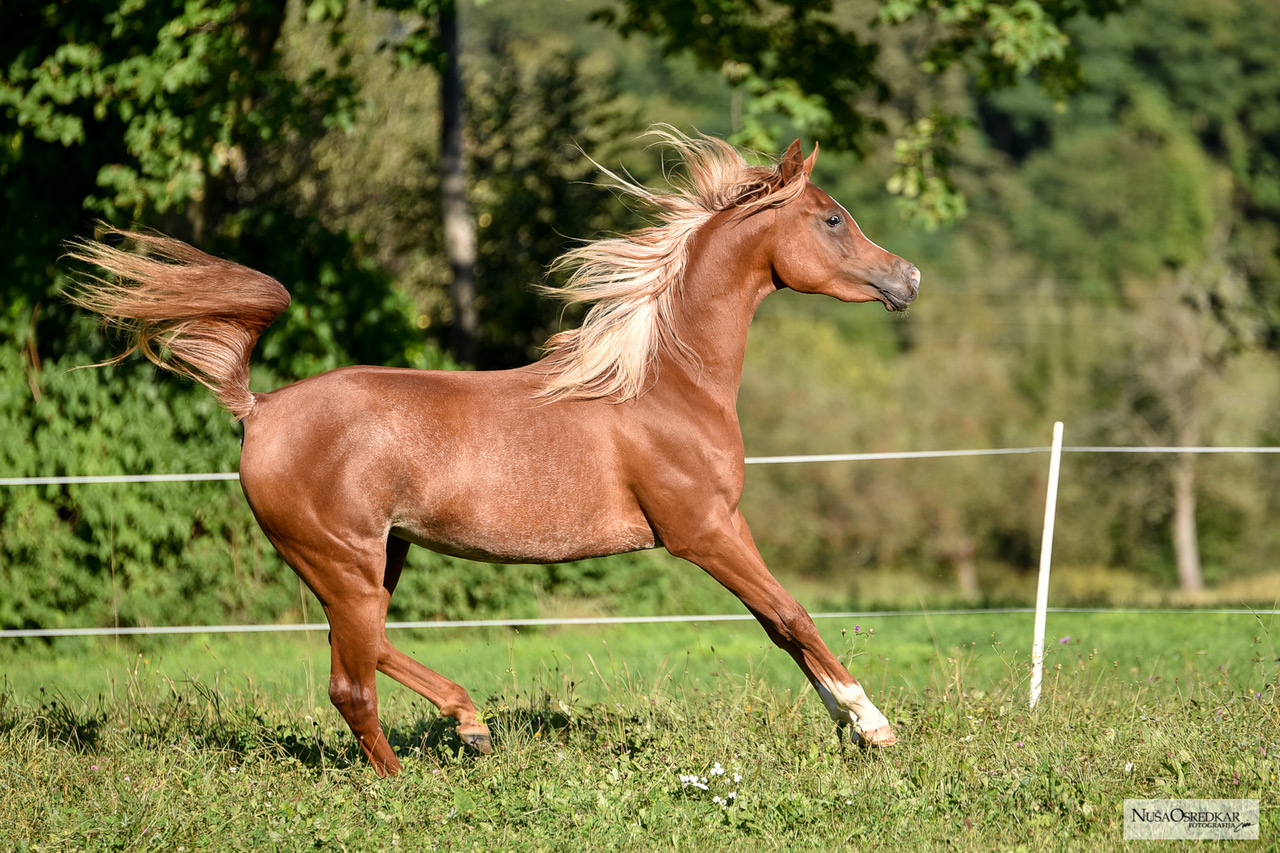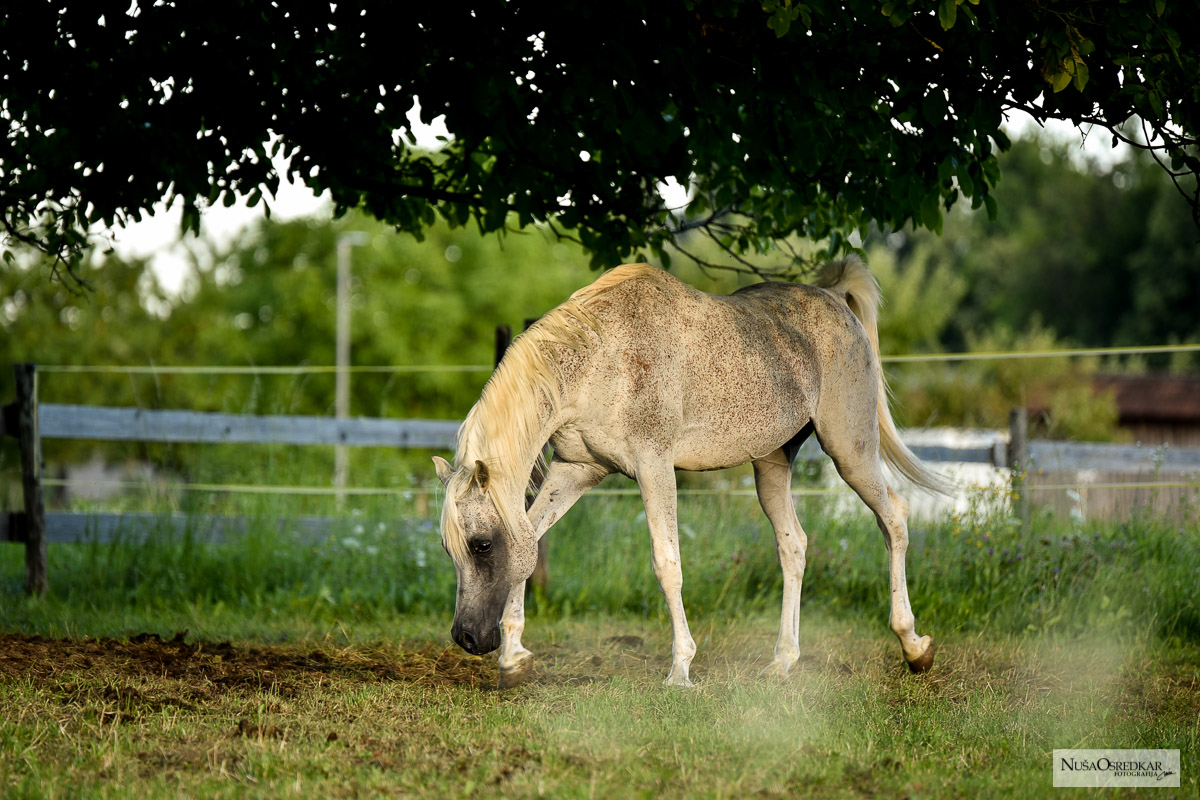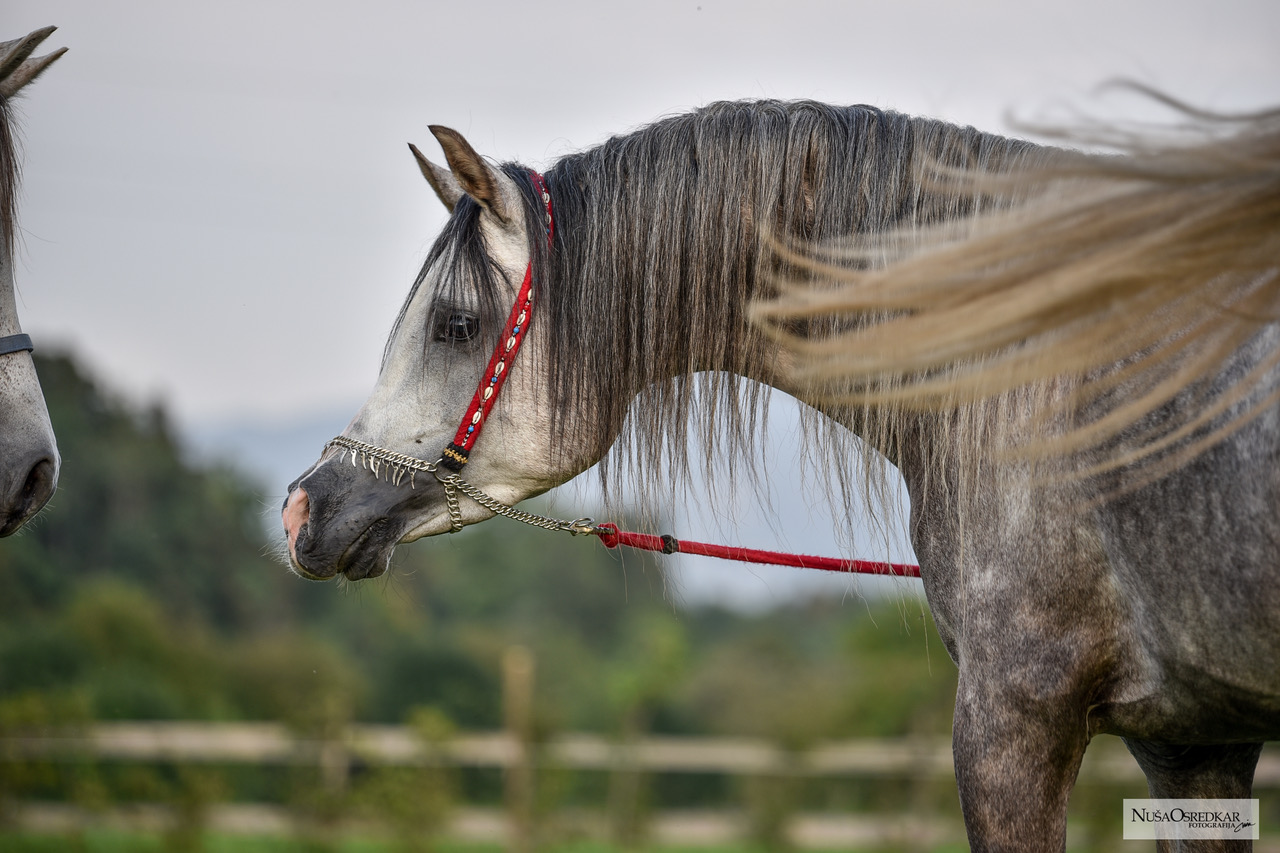Mystique
Wild breathe
YOU, ARISING FROM THE PAST
A BREATH OF ANCIENT TIMES
A BREATH OF ETERNITY
FROM THE ANCIENT UNTIL THE END OF TIMES
WOVEN FROM THE SOUTHERN WIND
“And God took a handful of southern breeze and shaped a horse from it, saying:
“I create thee, oh Arabian. To thy forelock, I bind victory in battle. On thy back, I set a rich spoil and a treasure in thy loins. I establish thee as one of the glories of the earth…I give thee flight without wings.”
– from an ancient Bedouin legend

Origins of the breed
The exact origins of the breed are unknown, but its evolution is certainly linked to the specific conditions of life in which it was reared: in the semi desert regions of the Middle East where no horse could live without man’s help. The nomads always lived side by side with their mounts. Proud of their horses, they bred them for their beauty, intelligence and their qualities of resistance. The Arabian horse was considered a gift from God and treated as such by the Bedouin society.
For the first hundred sunsets of their lives, they were fed camel’s milk and for the next hundred, the milk was mixed with a few handfuls of wheat. After this period, the foal was permitted to graze on the soft, dry grass around the master’s tent. The horse ate barley and drank camel’s milk in the evenings, just like any other member of the family.
A purebred Arabian horse has in the past inspired a fanatical passion on the scale of true religious zeal and is today revered in stud farms that are authentic temples of this breed.
There are countless myths concerning the origins of the Arabian horse. Traditional legends, including the above mentioned Bedouin legend, have wrapped the roots of the Arabian horse in a veil of mystery.
Asil
Yet another, equally ancient story states, “In the beginning, God gave Ishmael, son of Abraham, a gift, made of mist and dust, as a reward for Ishmael’s faith and dedication to the God of his father. Out of the mist and dust came the first Asil Arabian mare, who was at the time in foal, and produced a son.” – Whitman Legend and Reality of Blue Star Arabians.
400 years before they the first pyramid was built, Arabian horses were so domesticated they acquired some of those human characteristics that fathers seek in their sons: loyalty, tact and steadfastness. Unlike most other animals, the Arabian horse wants to please and is willing to risk his own life for the master.


Major Dixon Denham
“There are only a few situations in a man’s life in which losses of this nature are felt most keenly and this was one of them. It was not grief, but it was something very nearly approaching to it and though I felt ashamed of the degrees of derangement I suffered from, yet it was several days before I could get over the loss. Let it, however, be remembered that the poor animal had been my support and comfort, nay I may say companion through many dreary days and nights. It had endured both hunger and thirst in my service and was so docile that he would stand still for hours in the desert while I slept between his legs, his body affording the only shelter that could be obtained from the powerful influence of the noonday sun. He was the fleetest of the fleet and ever foremost in the chase.”
This is what Major Dixon Denham, an explorer and officer in the British army, who traveled from Tripoli, Libya across the Sahara desert in the winter of 1823, wrote about his Arabian stallion who died somewhere south of the equator. The Arabian horse has served and is still serving as an example of power and bravery.
True beauty
The true beauty and skill of the Arabian horse – its narrow and noble head, small and slightly curved ears, large shining eyes that look as if they were made up and roll like giant marbles, but their gaze can also be as gentle as a blink of a girl; large, accentuated nostrils, which at full gallop ensure that the horse does not run out of breath, its elongated neck, huge, wavy, velvety muscles and high fluttering tail – provide it with a look of natural elegance.
The Arabian Horse is therefore a symbol of equine beauty. It is extremely full of temperament, bold, strong, modest, highly intelligent, lively, loyal, of noble appearance, it possesses exceptionally developed hearing and orientation skills as well as strong, thin bones and a big heart. It these characteristics make him so mythologically endurable and unique.
The Arabian horse is therefore a symbol of the beauty of horses. He is extremely temperamental, brave, tough, humble, highly intelligent, lively, loyal, of noble appearance, extremely developed hearing and orientation abilities, and strong thin bones and a big heart. It is these qualities that make him so fabulously resilient and unique in the world and his incredible ability to pass on the genetic record to his successors, enthroning him as a prince among horses who can proudly serve with the same excellence as a military horse or as an exceptional example of grace, power, mysticism, fearlessness and fidelity under the soft brush of a master painter.
The passion ignited by a purebred Arabian horse is easier to understand today. It is still used to continually perfect other breeds for three purposes: for horse races and shows, as a riding horse (particularly for endurance riding, in which it excels) and thirdly, for sheer pleasure while maintaining the famous bloodlines.
Many owners, particularly in the homelands of the Arabian horse, protect the rare pearls of exceptional mares and studs. The king of Morocco, for instance, built the extremely expensive stud farm “Bouzinka” simply to protect these purebred sons of the desert of almost sacred descent.
The wide-open eyes of these remarkable creatures reveal their courage, intelligence and their willingness to give their heart and soul to those they love.




